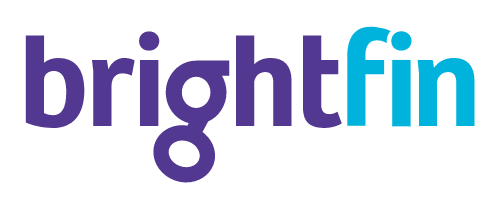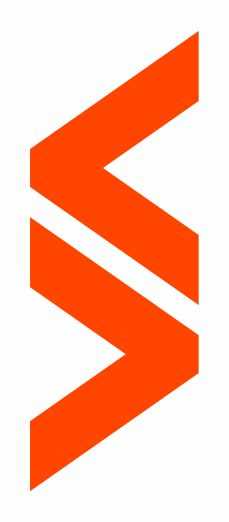Description

Abacus

brightfin
Comprehensive Overview: Abacus vs brightfin
Abacus and brightfin are software platforms within the realm of financial management and expense optimization, each catering to distinct needs in the business landscape.
a) Primary Functions and Target Markets
Abacus: Abacus is primarily a real-time expense reporting software designed to streamline and simplify the process of employee expense management.
-
Primary Functions:
- Real-time expense reporting and reconciliation.
- Automated approval workflows.
- Integration with accounting software for seamless record-keeping.
- Policy enforcement to ensure compliance.
- Analytics and reporting to provide insights into spending patterns.
-
Target Markets:
- Small to medium-sized businesses (SMBs) looking for efficient and automated expense management solutions.
- Enterprises in need of modern tools to replace traditional, manual expense reporting processes.
brightfin: brightfin is a Telecom, Mobile, and IT Expense Management (TEM) platform focused on optimizing and managing technology expenses for organizations.
-
Primary Functions:
- Telecom expense management for reducing telecom costs.
- Mobile device management to handle enterprise mobility and BYOD policies.
- IT spend management and optimization.
- Invoice and contract management for telecom and IT.
- Detailed analytics for technology spend insights.
-
Target Markets:
- Large enterprises with significant telecom, mobile, and IT expenditures.
- Organizations seeking comprehensive management of complex and extensive technology ecosystems.
b) Market Share and User Base
Both Abacus and brightfin have specific niche markets they cater to:
-
Abacus typically has a wider appeal among SMBs due to its user-friendly interface and real-time functionalities, which are crucial for smaller teams looking to increase efficiency without complex system overhauls.
-
brightfin generally targets larger enterprises, given its specialized focus on Telecom and IT expense management. This usually translates into a smaller but more concentrated user base that is heavily reliant on technology expenditures.
Due to the different focuses, direct market share comparisons are challenging. Abacus has traditionally been strong among businesses that prioritize ease of use and quick implementations, while brightfin holds a significant position in enterprises needing specialized solutions for managing telecom and IT expenses.
c) Key Differentiating Factors
Abacus:
- Real-time Processing: A key differentiator is its ability to process and manage expenses in real-time, which drastically reduces the time between expense occurrence and reimbursement.
- User-Friendly Interface: Abacus is known for its clean, easy-to-use interface that simplifies expense management for users.
- Automation: Extensive use of automation for policy enforcement and approval workflows which appeals to businesses looking to reduce administrative overhead.
brightfin:
- Specialization in Telecom and IT: Its specialization sets it apart as it provides targeted solutions for managing and optimizing telecom and IT expenses, which are typically more complex.
- Comprehensive TEM Features: Extensive capabilities in managing telecom invoices, contracts, and devices, which is unique compared to general expense management tools.
- Integration for Large Enterprises: Capabilities that are specifically designed for the scale and complexity of large enterprises' IT environments.
In summary, while Abacus focuses on making expense management straightforward and real-time, brightfin offers a more narrowly tailored suite of tools for managing telecom and IT expenses within large organizations. The choice between them would largely depend on the specific needs related to an organization's size and complexity of IT infrastructure.
Contact Info

Year founded :
2021
Not Available
Not Available
Not Available
Not Available

Year founded :
2001
+1 415-200-2888
Not Available
United States
http://www.linkedin.com/company/brightfin-software
Feature Similarity Breakdown: Abacus, brightfin
To provide a comprehensive feature similarity breakdown between Abacus and brightfin, we'll explore each aspect you're interested in: core features, user interfaces, and unique features.
a) Core Features in Common
Both Abacus and brightfin are financial management tools that cater to streamlining expense management and optimizing financial operations. Here are some core features they likely have in common:
-
Expense Management:
- Both platforms support tracking, reporting, and managing business expenses efficiently.
- Integration with mobile applications to capture receipts and expenses on-the-go.
-
Automated Workflows:
- Automation of approval workflows for faster processing and reduced manual effort.
- Customizable approval hierarchies and policy enforcement.
-
Analytical Reporting:
- Real-time analytics and reporting capabilities to provide insights into spending patterns.
- Customizable dashboards to display key metrics and financial KPIs.
-
Integration Capabilities:
- Integration with accounting software such as QuickBooks, SAP, or Oracle.
- Support for data import/export to synchronize with other business systems.
-
Policy Compliance:
- Ensures compliance with corporate policies through configurable rules and alerts.
- Simplifies audits with easy access to expense records and reports.
b) User Interfaces Comparison
Abacus:
-
UI Characteristics:
- Abacus typically features a clean, intuitive user interface with emphasis on simplicity and ease of use.
- The dashboard is often designed to provide quick access to key functions like expense reporting, approval status, and analytics.
-
User Experience:
- Known for its user-friendly design with minimal learning curve, beneficial for fast onboarding.
- Mobile apps focus on quick data entry and instant receipt capture.
brightfin:
-
UI Characteristics:
- brightfin tends to have a more robust interface due to its focus on telecom expense management, IT finance, and asset management.
- May offer a more complex dashboard with multiple modules focused on different financial aspects.
-
User Experience:
- Slightly steeper learning curve owing to the broader range of functionalities tailored for IT and telecom environments.
- Mobile and desktop experiences are designed to handle more detailed operations such as service procurement and asset lifecycle tracking.
c) Unique Features
Abacus:
-
Real-Time Expense Reporting:
- Allows users to report and manage expenses in real-time, making it ideal for businesses that require up-to-date financial data.
-
AI-Powered Insights:
- Utilizes AI to provide insights and suggest optimizations based on historical expense data patterns.
brightfin:
-
Telecom Expense Management:
- Unique focus on managing IT and telecom expenses specifically, offering detailed insights and control over these areas.
-
IT Finance Management:
- Advanced features for budgeting and forecasting IT-related costs, which can be crucial for enterprises with significant IT investments.
-
Asset Management:
- Comprehensive asset management functionalities that track the full lifecycle of company assets, providing clear visibility and control.
In summary, while Abacus and brightfin share several core financial management features, their interfaces and some functionalities differ significantly based on their primary focus areas—Abacus on general expense management and brightfin on telecom and IT finance management. These unique features can influence which solution is more suitable depending on a company’s specific operational needs.
Features

Not Available

Not Available
Best Fit Use Cases: Abacus, brightfin
Abacus and brightfin are both tools that cater to distinct business needs, primarily revolving around expense management and telecom expense management, respectively. Here's a breakdown of their best fit use cases, suitable industries, and business sizes.
Abacus
a) For what types of businesses or projects is Abacus the best choice?
Use Cases:
- Expense Management: Abacus is designed for real-time expense reporting and management. It is ideal for organizations that require a fluid and immediate approach to handling expenses.
- Reimbursement Automation: Companies looking to automate their employee reimbursement processes will find Abacus beneficial.
- Policy Compliance: Businesses that want to ensure employees stay compliant with internal expense policies can leverage Abacus’s features to automatically flag or approve expenses.
- Data-Driven Decisions: Firms focused on detailed spend analytics to influence financial decisions and policy adjustments can gain insights through Abacus’s real-time data.
Industry Vertical/Company Sizes:
- Small to Medium Enterprises (SMEs): Smaller organizations with dynamic operational needs can benefit from its agility and ease of use.
- Startups: Especially useful for startups or companies in growth phases needing a cost-efficient, scalable solution with minimal administrative burden.
- Industries such as Technology, Consulting, or Agencies: Where frequent on-the-go expense reporting is essential for business operations.
brightfin
b) In what scenarios would brightfin be the preferred option?
Use Cases:
- Telecom Expense Management (TEM): brightfin specializes in managing and optimizing telecom expenses, making it an excellent fit for businesses with significant telecom overhead.
- IT Expense Management: Organizations requiring oversight on mobile, fixed line, and IT expenses across numerous departments or regions.
- Inventory Management: Companies that need effective tools for tracking assets and inventories across telecom networks.
- Contract Management: Firms looking to get better visibility into telecom contracts for cost-saving opportunities.
Industry Vertical/Company Sizes:
- Large Enterprises: Enterprises with complex IT and telecom environments will benefit from brightfin’s comprehensive features.
- Telecommunications, Healthcare, or BFSI (Banking, Financial Services, and Insurance): Industries heavily reliant on data and communication technology will find brightfin’s capabilities particularly beneficial.
- Government and Education: Sectors needing centralized management and transparency over various service providers and contracts.
How do these products cater to different industry verticals or company sizes?
-
Abacus is highly adaptable to smaller scale operations and industries needing rapid expense processing and data-driven decision making. Its real-time capabilities make it favorable for dynamic and evolving business environments.
-
brightfin provides robust solutions for larger organizations requiring detailed telecom expense management and optimization. Its focus on telecom and IT expense management suits enterprises with substantial technological infrastructures and those seeking efficiencies through a centralized platform.
In summary, the decision between Abacus and brightfin should primarily be based on the type of expense management required (general employee expenses vs. telecom/IT expenses) and the scale of the business operations. Abacus is well-suited for quick, dynamic expense management, while brightfin excels in comprehensive, enterprise-grade telecom expense solutions.
Pricing

Pricing Not Available

Pricing Not Available
Metrics History
Metrics History
Comparing teamSize across companies
Conclusion & Final Verdict: Abacus vs brightfin
To provide a conclusion and final verdict on Abacus and brightfin, we need to evaluate both products in terms of their overall value, pros and cons, and offer recommendations for users trying to decide between them.
a) Best Overall Value
Overall Value: Both Abacus and brightfin have distinct strengths that cater to different business needs.
- Abacus is generally known for its simplicity and user-friendly interface, making it an excellent choice for small to mid-size companies looking for straightforward expense management.
- brightfin, on the other hand, offers robust telecom expense management (TEM), IT expense management, and mobility management solutions, making it ideal for larger enterprises needing comprehensive and integrated management tools.
Based on these aspects, brightfin might offer the best overall value for large enterprises due to its extensive features and scalability. However, for smaller businesses primarily focused on expense management without the need for extensive telecom features, Abacus may provide better value.
b) Pros and Cons
Abacus
-
Pros:
- Easy-to-use and intuitive interface.
- Efficient expense tracking and real-time expense reporting.
- Seamless integration with popular accounting software.
-
Cons:
- Limited features for telecom and IT expense management.
- May not scale well for very large enterprises with complex needs.
brightfin
-
Pros:
- Comprehensive telecom and IT expense management features.
- Robust reporting and analytics capabilities.
- Scalable for large organizations with complex management needs.
-
Cons:
- Can be overly complex for smaller companies.
- Might have a steeper learning curve due to the breadth of features.
c) Specific Recommendations
-
Assess Your Needs: Consider the specific needs of your business. If your organization requires extensive telecom and IT expense management and operates on a larger scale, brightfin might be the better choice.
-
Budget Considerations: For companies with budget constraints or those who do not need extensive telecom management, Abacus offers simpler, more cost-effective solutions.
-
Integration Capabilities: Look at how each solution integrates with your existing systems. If seamless integration with basic accounting software is a priority, Abacus has clear strengths in this area.
-
Trial and Demos: Take advantage of free trials or demos offered by both platforms to get first-hand experience and see which aligns better with your team’s workflow.
-
Scalability: Consider future growth. If you anticipate needing more complex solutions as your company grows, brightfin might provide better scalability options.
In conclusion, the decision between Abacus and brightfin depends largely on the size of the company and the specific features required. By evaluating these factors, businesses can choose the product that aligns best with their operational needs and growth plans.
Add to compare
Add similar companies



